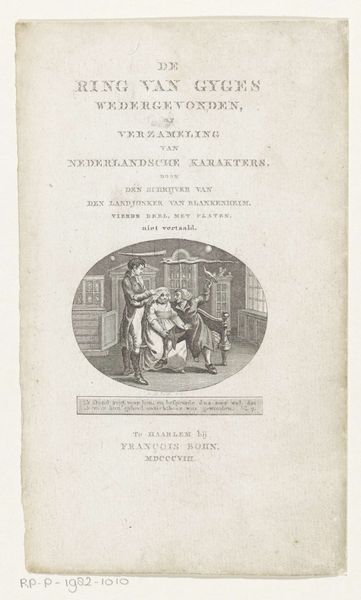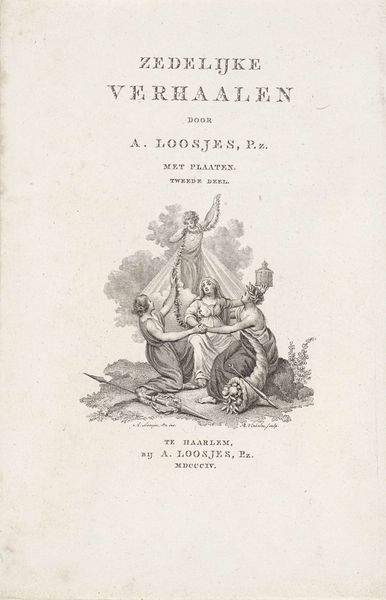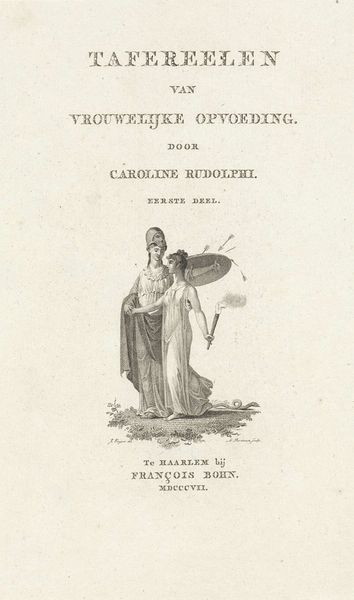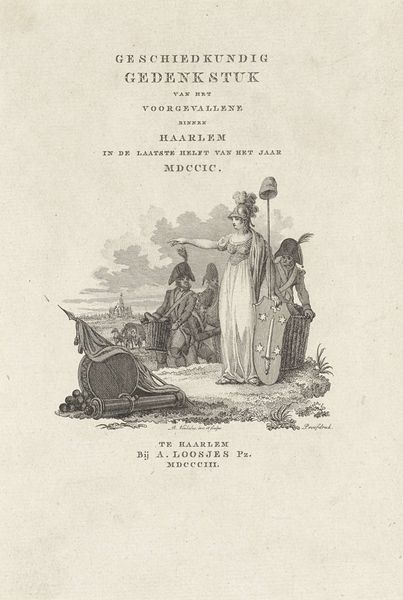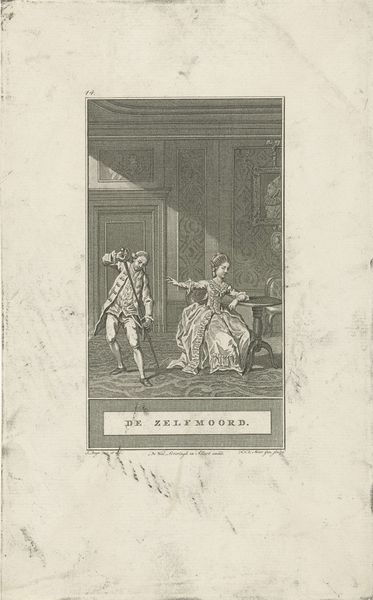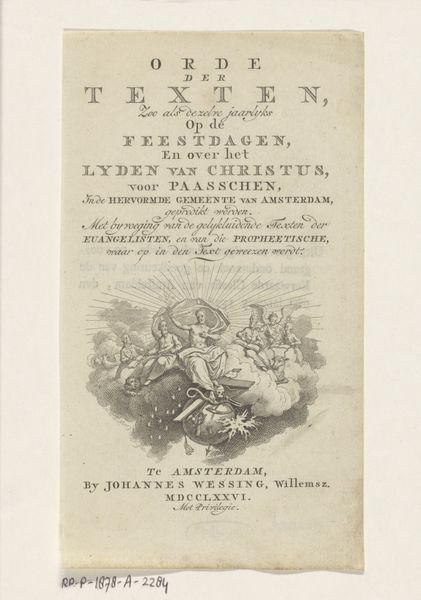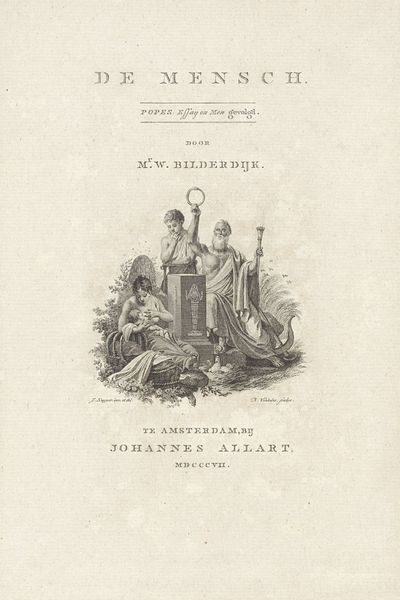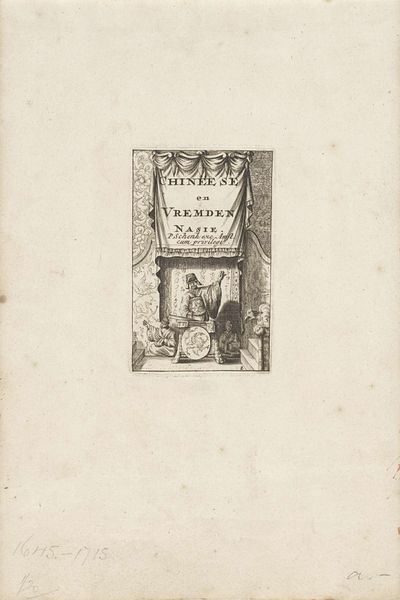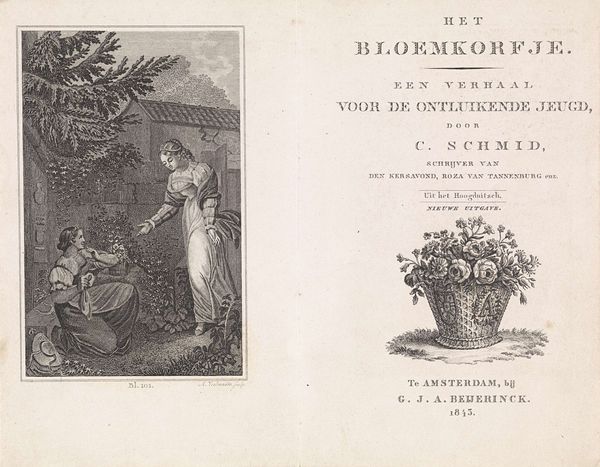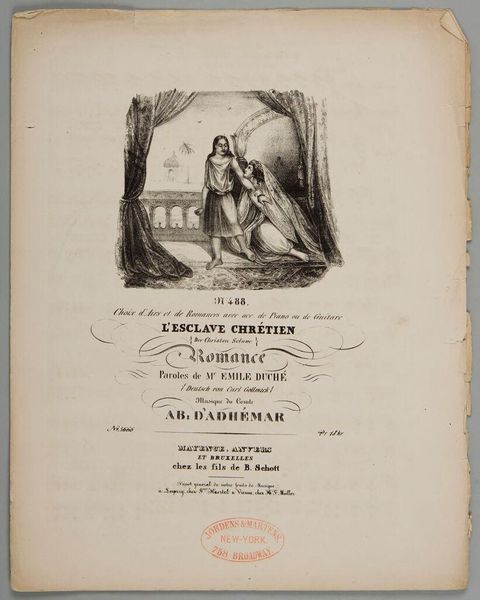
Titelpagina voor: A. Pz. Loosjes, 'De Vrouw in de Vier Tijdperken Haars Levens', 1809 1809
0:00
0:00
reiniervinkeles
Rijksmuseum
print, engraving
#
neoclacissism
#
allegory
# print
#
history-painting
#
engraving
Dimensions: height 253 mm, width 171 mm
Copyright: Rijks Museum: Open Domain
Curator: This engraving by Reinier Vinkeles serves as the title page for A. Pz. Loosjes' book, 'De Vrouw in de Vier Tijdperken Haars Levens', published in 1809. Editor: My first impression is of ethereal lightness; the pale tones and wispy lines almost make it seem to float on the page. It's remarkably restrained for an allegorical work. Curator: Absolutely. It’s deeply rooted in Neoclassicism, reflecting a desire for order and reason. The four female figures symbolize the different ages of a woman’s life, positioned almost architecturally, their placement is carefully considered and symbolically dense. Editor: Right, and considering the printing process of the time, I wonder about the engraver’s tools—the burin, the metal plate, and the immense skill required to achieve this level of detail with such unforgiving materials. You have to appreciate the physical labor and mastery involved, transforming metal into something seemingly weightless. Curator: The imagery holds echoes of classical myth, but reframes it within a contemporary context. The woman holding the hourglass representing old age and another seated with an anchor suggests steadfastness during her adulthood. Notice, even the cherubic figure embodies youth with musical flute, it suggests innocence but with controlled exuberance, reflective of that era's focus on refined emotions. Editor: Yes, that precision reflects the social constraints on women at the time. It would be interesting to know more about the specific societal expectations for women Loosjes outlined in his book. These aren't just timeless symbols; they're rooted in the social and economic realities of early 19th-century Dutch society. How were the ideas in that book materialized? Curator: It’s a subtle piece, but powerful in its distillation of complex ideas into accessible imagery. The artwork operates within this established visual language but carries its own distinctive cultural memory of gender roles. Editor: A print like this reveals not just the artistic choices of Vinkeles, but the very process by which ideas circulated and were consumed in that era. It gives one a view into the materials and production practices that shaped the public conversation around identity.
Comments
No comments
Be the first to comment and join the conversation on the ultimate creative platform.
